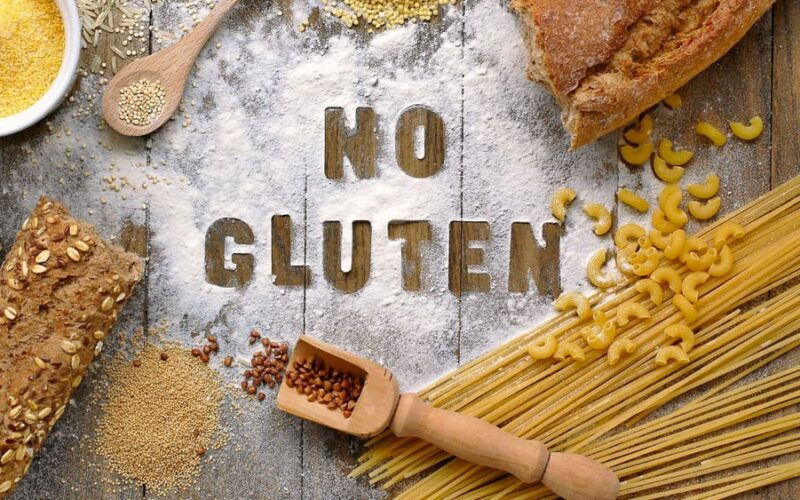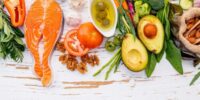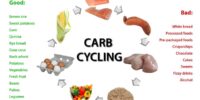Gluten Intolerance – Food Sensitivities in 60 seconds

What is a gluten
A gluten is a type of protein found in certain grains, like wheat, barley, and rye. Some people have a hard time digesting gluten, and they have to avoid foods that have it in them. This is called being gluten intolerant or having celiac disease. Some people also choose to avoid gluten for other health reasons.
What is a gluten intolerance
A gluten intolerance is when a person’s body has a hard time digesting gluten, which is a protein found in certain grains like wheat, barley, and rye. So when they eat foods that have gluten in them, it can make them feel sick or give them a stomachache.
Some people have a really bad gluten intolerance called celiac disease, which can make them very sick if they eat gluten. If someone has a gluten intolerance, they need to be careful about what they eat and avoid foods that have gluten in them.
Food Sensitivities are not the same as Food Allergies. A Food Allergy is a peanut causing anaphylaxis. A Food Sensitivity (or Intolerance) is about inflammation. It is a slow, internal process that causes global inflammation all over the body. Inflammation causes discomfort and symptoms. It spreads to other parts of the body and destroys delicate tissues. It causes cancer.
What does Gluten Intolerance look like
Digestive Issues – people with constipation, diarrhea, and diagnosis of IBS or Crohn’s. Headaches. Fatigue. Inability to lose weight despite diet and exercise. Any inflammatory condition (arthtiris, aching joints, and so forth). Skin problems like acne, psoriasis, eczema, or rashes. Allergies (sinus infections, ear infections, sneezing, cough).
What foods would most likely cause this? Well, the “heavy hitters” of Food Sensitivities are Gluten, Dairy, and Sugar. Each of those are actually not a single item, it’s a category.
Example:
Gluten is actually: Barley, Brewer’s Yeast, Gliadin, Gluten, Hops, Malt, Oat, Rye, Spelt, and/or Wheat.
Dairy is: Caesin, Cow’s Milk, Egg Yolk, Egg white, Goat’s Milk, Sheep’s Milk.
And if you’re thinking that you don’t even eat these items, think again. Cow’s milk is ice cream. Sheep’s milk is the primary ingredient in yogurt. Eggs are in practically anything that comes in a wrapper or box.
Why do you need a test to find all of this out?
Simply because it would be extremely difficult to choose one item at a time and test it out to see if removing it makes a change. AND, if you can be sensitive/intolerant to Cow’s Milk….
Why couldn’t you be to Broccoli? Or Olive Oil? It’s not just foods that are “bad” for you – it can be anything and everything. The testing I use is the gold standard, and it even includes household chemicals, medications, herbs and supplements.
Top 20 everyday foods with high gluten
Gluten content can vary widely depending on the specific product and brand. It can also depend on the processing and preparation methods used. Therefore, it is difficult to provide exact list of everyday foods with a specific gluten content. However, generally speaking, foods made from wheat, barley, and rye are known to have high gluten content. Examples include:
- Bread (usually contains around 12-15% gluten)
- Pasta (usually contains around 12-15% gluten)
- Pizza (can contain up to 20% gluten depending on the crust)
- Cereal (can contain up to 20% gluten)
- Crackers (can contain up to 20% gluten)
- Baked goods (cakes, cookies, pastries) (can contain up to 20% gluten)
- Flour (around 12-15% gluten)
- Beer (around 12-15% gluten)
- Soy sauce (around 12-15% gluten)
- Worcestershire sauce (around 12-15% gluten)
- Gravies (around 12-15% gluten)
- Soups (around 12-15% gluten)
- Sauces (around 12-15% gluten)
- Salad dressings (around 12-15% gluten)
- French fries (around 12-15% gluten)
- Fried foods (around 12-15% gluten)
- Processed meats (around 12-15% gluten)
- Imitation seafood (around 12-15% gluten)
- Energy bars (around 12-15% gluten)
- Oats (may be cross-contaminated with gluten)
It’s worth noting that these gluten levels are approximate, and can vary widely depending on the specific product, brand, preparation and processing method. Many of these foods can also be found in gluten-free versions, so people with gluten intolerance can still enjoy similar options. Additionally, some of these foods may not necessarily contain gluten as an ingredient but can be cross-contaminated during the production process.
20 gluten free foods
- Fresh fruits and vegetables
- Meat and poultry (not breaded or marinated)
- Fish and seafood
- Eggs
- Dairy products
- Legumes (beans, lentils, chickpeas)
- Nuts and seeds
- Gluten-free grains (rice, quinoa, millet, amaranth)
- Gluten-free flours (almond flour, coconut flour, rice flour)
- Gluten-free pasta
- Gluten-free bread and bakery items
- Gluten-free crackers
- Gluten-free oats (certified gluten-free)
- Gluten-free snacks (potato chips, popcorn)
- Gluten-free cereal
- Gluten-free beer and wine
- Gluten-free condiments (mustard, ketchup, mayonnaise)
- Gluten-free frozen meals
- Gluten-free energy bars
- Gluten-free chocolate and sweets
It’s worth noting that some processed foods may contain gluten-free ingredients but also have risk of cross-contamination with gluten during the production process. Therefore, always check the label and look for gluten-free certification before consuming.
We encourage reproducing our articles as long as you link back to this page.
In collaboration with Dr. Kristen Bobik







